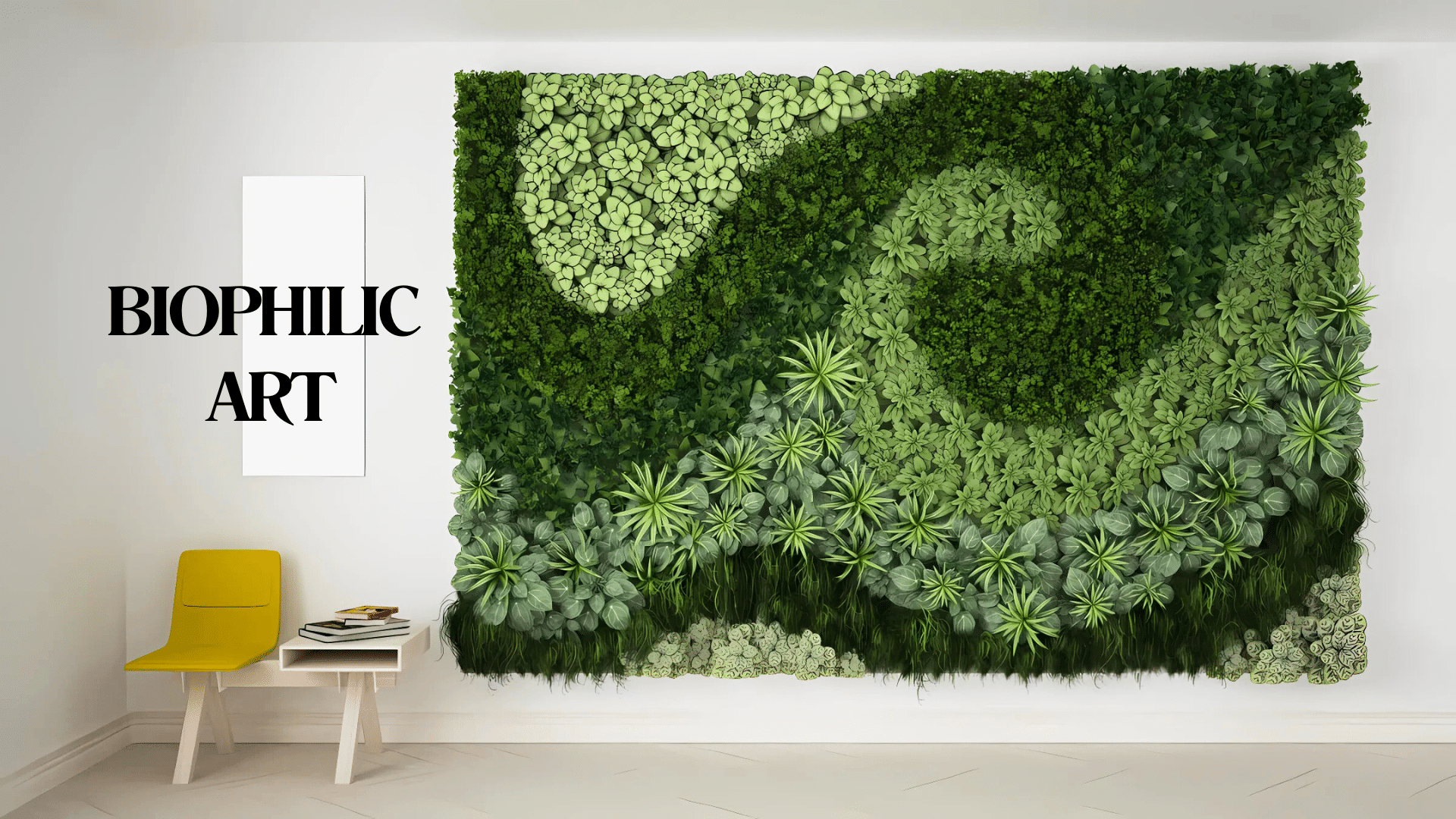When was the last time you felt truly calm?
For most people, that moment happened in nature—at the beach, in a garden, or under a big tree. Now, imagine bringing that feeling into your home or office. Biophilic art does exactly that.
It brings the outdoors inside through designs that copy nature’s patterns, colors, and shapes. From leaf-shaped lamps to wall paintings of forests, these nature touches can change how you feel at home or work.
Studies show that rooms with nature elements help lower stress, boost focus, and even speed up healing. Plus, they just look nice!
Ready to learn how adding touches of nature to your space can make it more than just pretty? Let’s dig into the world of biophilic design and see how it helps both your home and your health.
What is Biophilic Art?
Biophilic art connects people with nature through design. The word “biophilia” means “love of life” and points to our built-in need to be near plants, water, and other natural things.
This type of art isn’t just about hanging pictures of mountains or forests on your walls. It goes deeper by copying the shapes, patterns, and feel of the outdoors. Think of wood grain panels that show natural curves, or lights that change like the sun moving across the sky.
Some examples of biophilic art include:
- Wall art made with real moss or plants
- Sculptures that look like ocean waves
- Light fixtures shaped like branches or leaves
- Rugs with patterns that look like stone or water
- Photos of nature printed on special materials
Unlike basic nature pictures, good biophilic art makes you feel like you’re truly connected to the outdoors, even when stuck inside.
3 Principles of Biophilic Design
Biophilic design emphasizes reconnecting humans with nature through various architectural and design elements. The main principles include:
1. Natural Elements
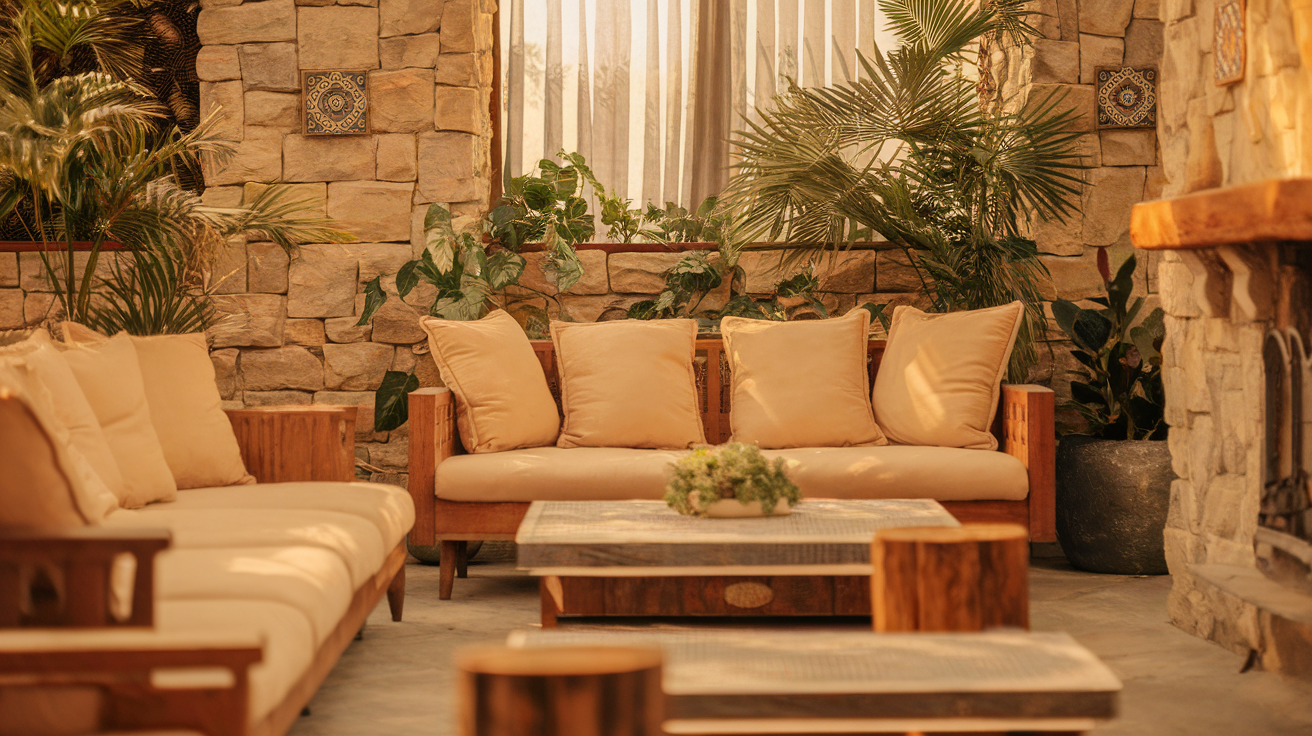
- Using Raw Materials: Adding wood, stone, bamboo, or clay brings texture and warmth that synthetic materials can’t match. These materials age naturally and tell a story through their wear patterns and patina.
- Living Features: Including plants, small water features, or terrariums adds life to spaces. Even a small tabletop fountain or a few well-placed plants can change how a room feels and sounds.
2. Visual Connection with Nature
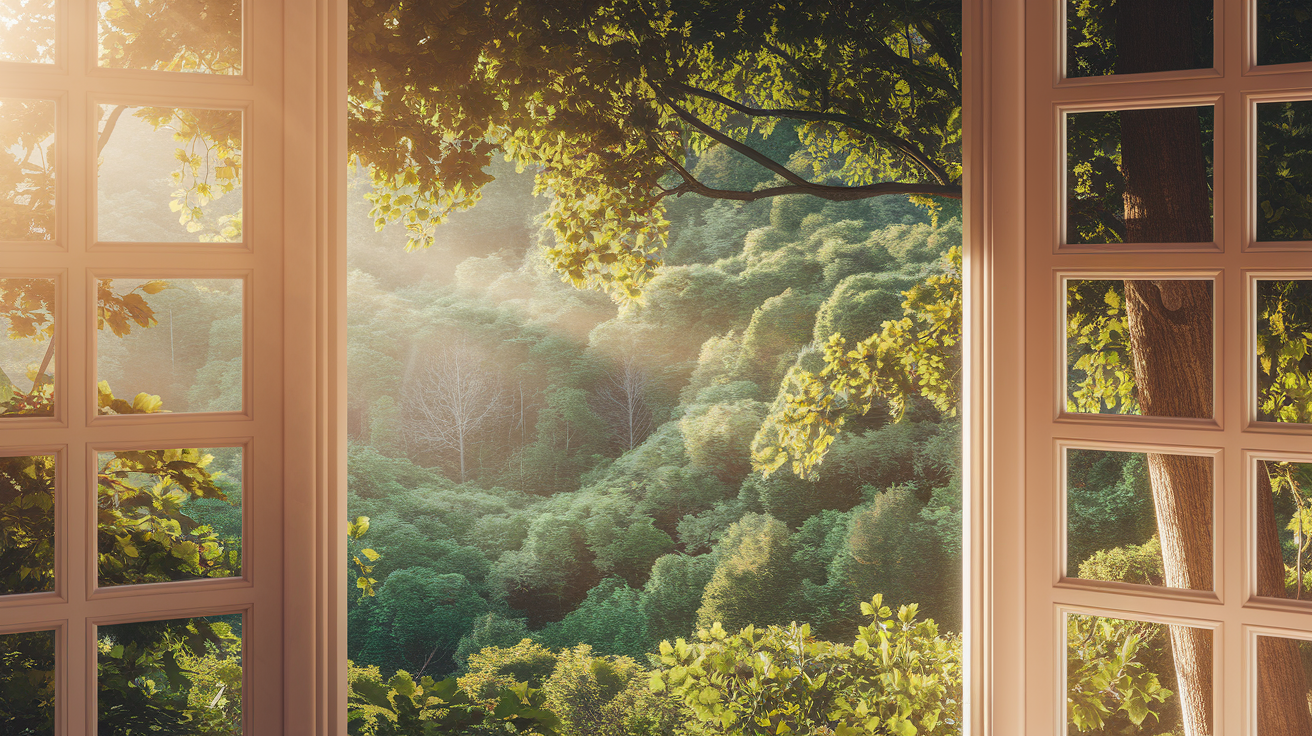
- Creating Natural Views: Spaces with views of trees, gardens, or water help people feel less stressed. When possible, arrange seating to face windows or add nature photography where real views aren’t available.
- Maximizing Natural Light: Daylight that shifts throughout the day helps our bodies maintain healthy sleep cycles. Large windows, skylights, or light fixtures that mimic sunlight can all help bring this element indoors.
3. Natural Forms and Patterns
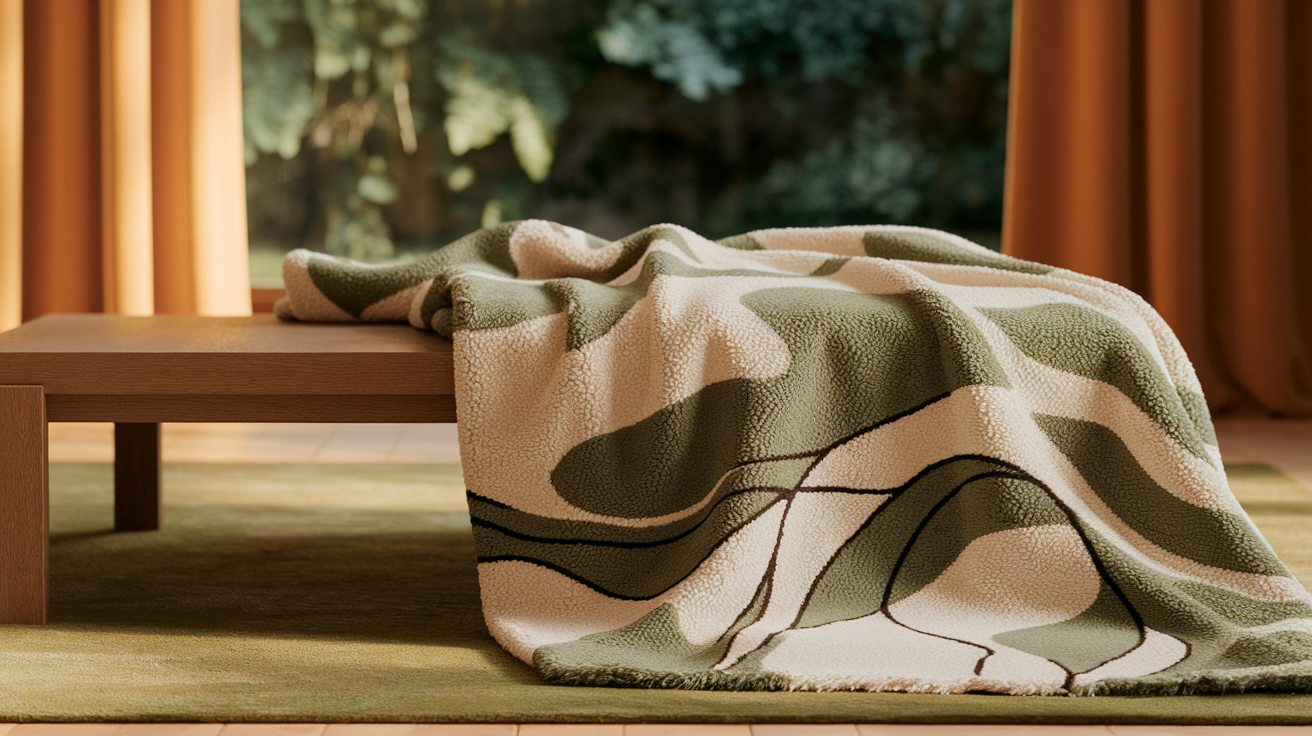
- Biomimicry: Copying nature’s shapes and patterns in furniture, fabrics, and layouts feels right to our brains. Think of curved furniture that mimics river stones or fabric patterns based on leaf veins.
- Organic Flow: Arranging spaces with winding paths rather than straight hallways creates more natural movement through a building. These flowing layouts feel less rigid and more like walking through a natural landscape.
How to Add Biophilic Art to Your Space
Getting started with nature-inspired design doesn’t have to be hard. Here are some quick ways to bring biophilic art into your home or office:
- Start small with a few potted plants in spots you see often
- Hang photos of nature scenes where you can see them while working
- Choose furniture with natural wood grain instead of solid colors
- Add a small tabletop fountain for the sound of flowing water
- Use nature-inspired fabrics for pillows or curtains
The key is to pick elements that you truly enjoy looking at. The best biophilic art connects with you on a personal level and reminds you of outdoor places where you’ve felt happy and at peace.
Advantages and Disadvantages of Biophilic Design
Before bringing nature into your space, consider these benefits and challenges of biophilic design.
| Advantages | Disadvantages |
|---|---|
| Reduces stress and anxiety | Can be more expensive than conventional design |
| Improves focus and productivity | Requires regular maintenance (especially with living plants) |
| Creates healthier indoor air quality | May not fit with all existing decor styles |
| Lowers blood pressure and heart rate | Can be difficult to implement in some urban settings |
| Speeds up healing and recovery time | Needs proper lighting for plants to thrive |
| Boosts creativity and problem solving | May attract insects or cause allergies for some people |
| Increases feelings of well-being | Real materials can wear or age in ways plastic doesn’t |
| Uses less energy when designed with natural light | Humidity from plants can be an issue in some climates |
Biophilic Art in Interior Design
Simple ideas for adding touches of nature to your home, no design degree needed.
Layer Natural Textures
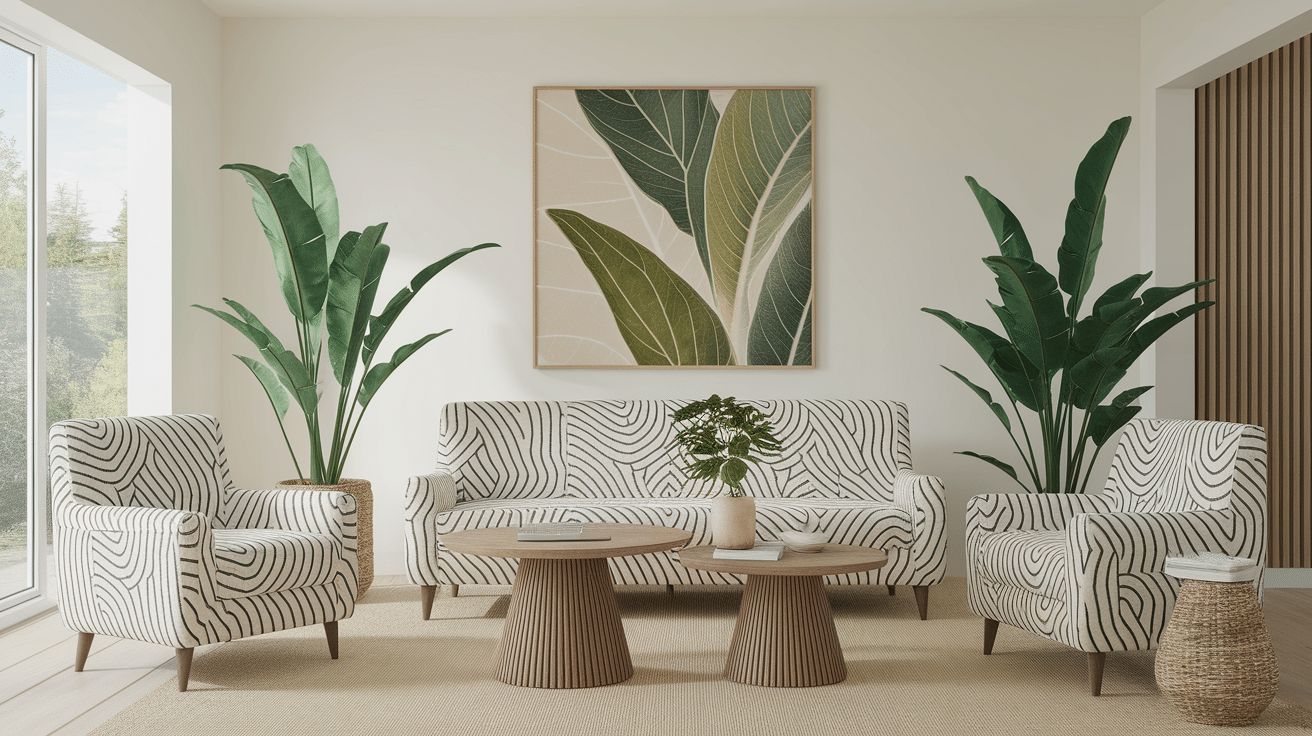
Mix smooth river stones with rough-cut wood or soft moss walls for contrast that mimics natural settings. The variety of textures creates interest while still feeling cohesive because these combinations occur in nature.
Consider Natural Traffic Flow
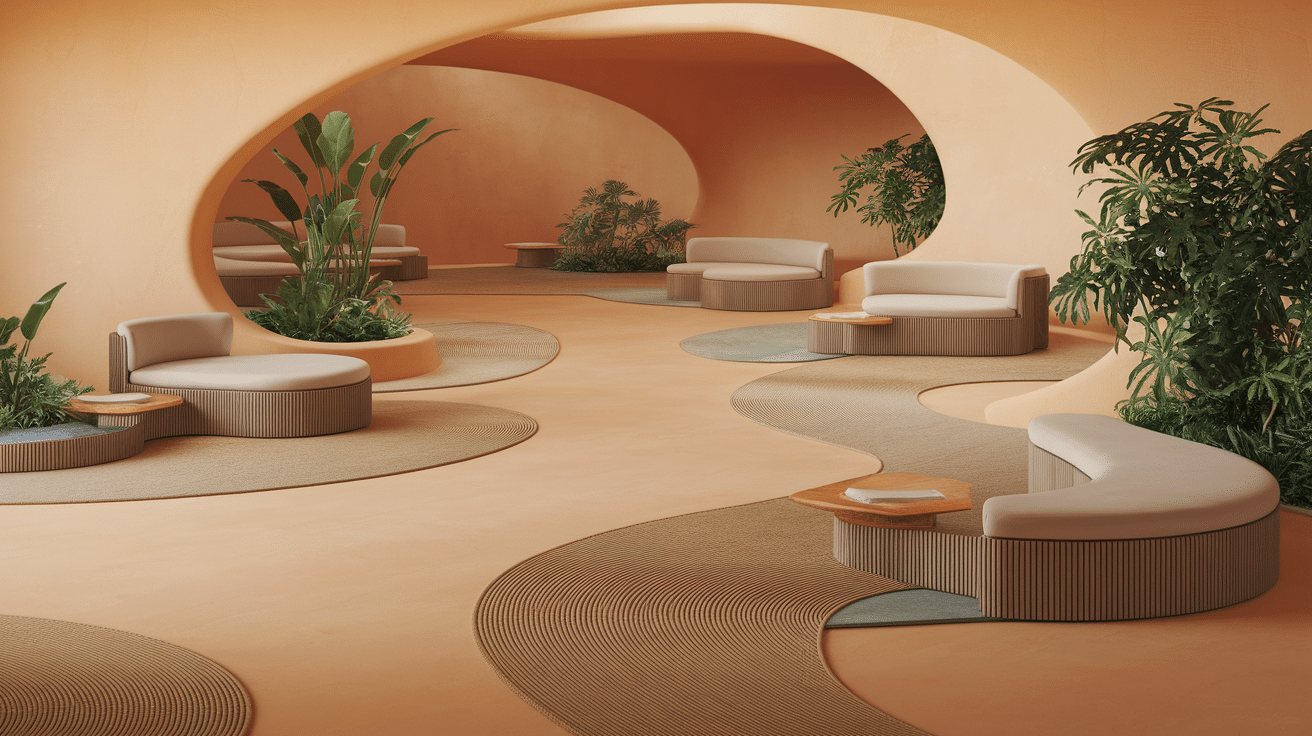
Just like a stream moves around rocks, your pathways should flow naturally around furniture and features rather than cutting through spaces. Curved pathways feel more natural than straight lines and right angles.
Minimalist Approach
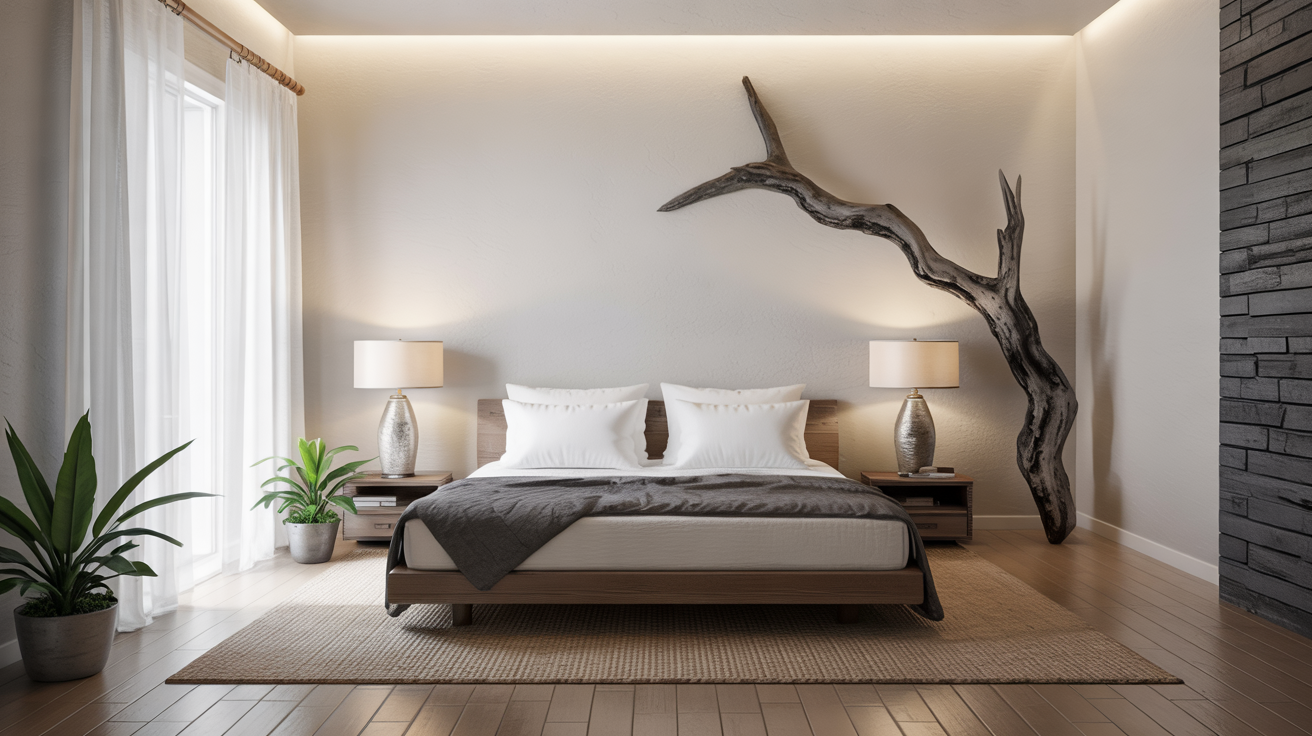
Add just a few high-quality natural elements like a striking piece of driftwood or a perfect stone basin in a clean, simple room. The contrast between empty space and natural detail draws attention to the beauty of each piece.
Modern Fusion
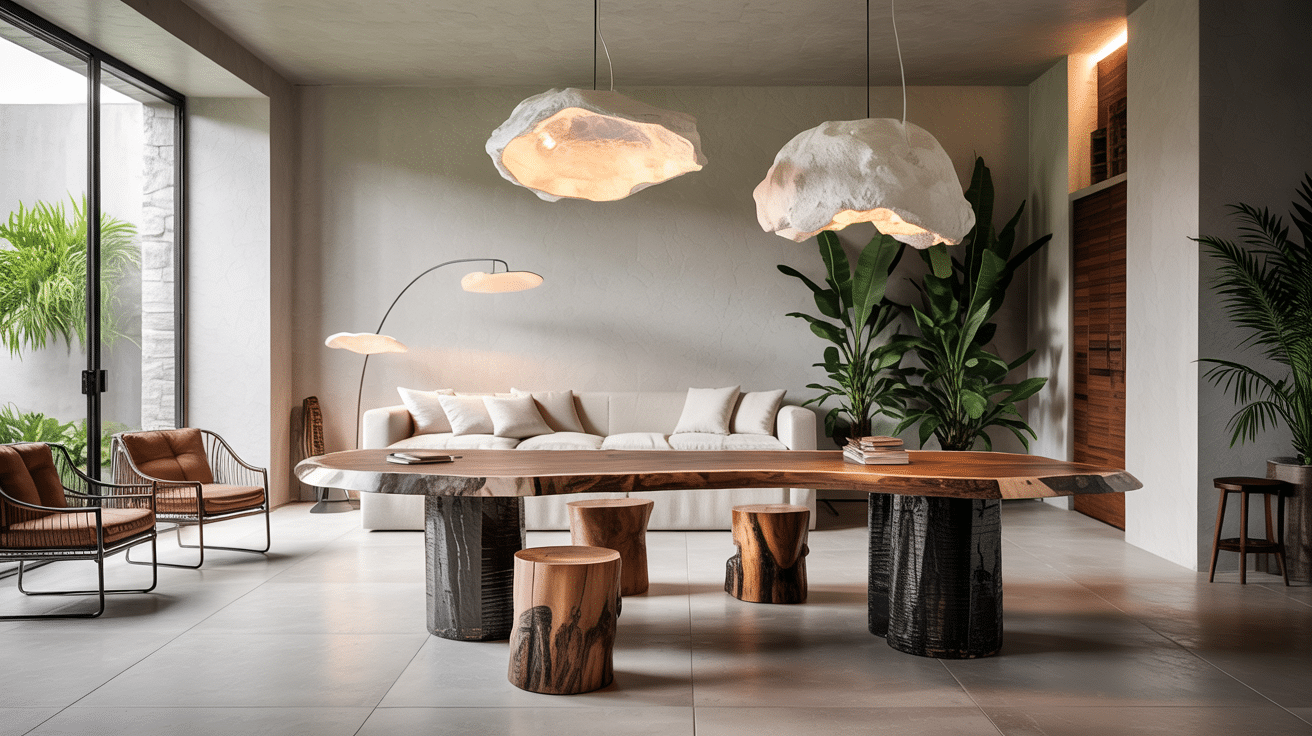
Pair sleek lines with organic shapes – a live-edge wood table under a modern light fixture creates beautiful tension. This combination honors both human innovation and natural beauty.
Traditional Enhancement
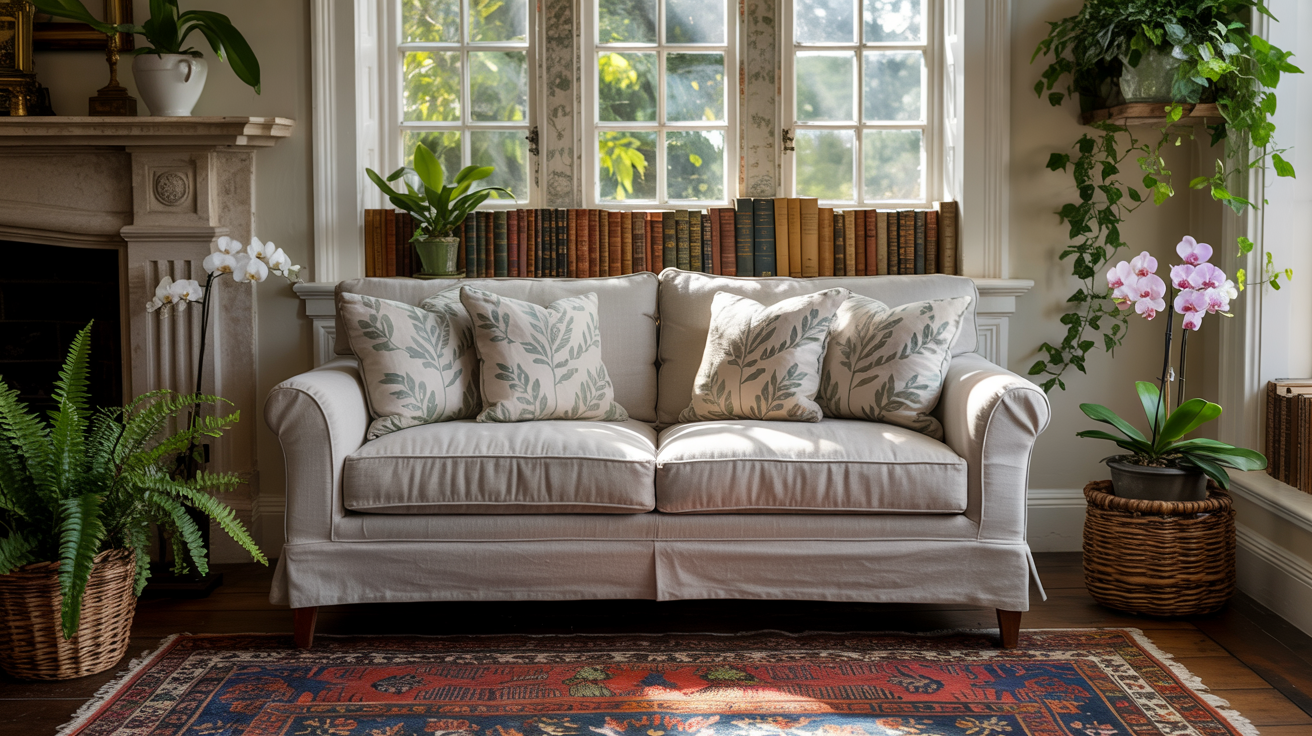
Natural materials already fit well in traditional homes – just add more plants and nature-inspired patterns to fabrics and wallpaper. Look for classic patterns based on leaves, flowers, and vines.
Nature-Inspired Color Palettes
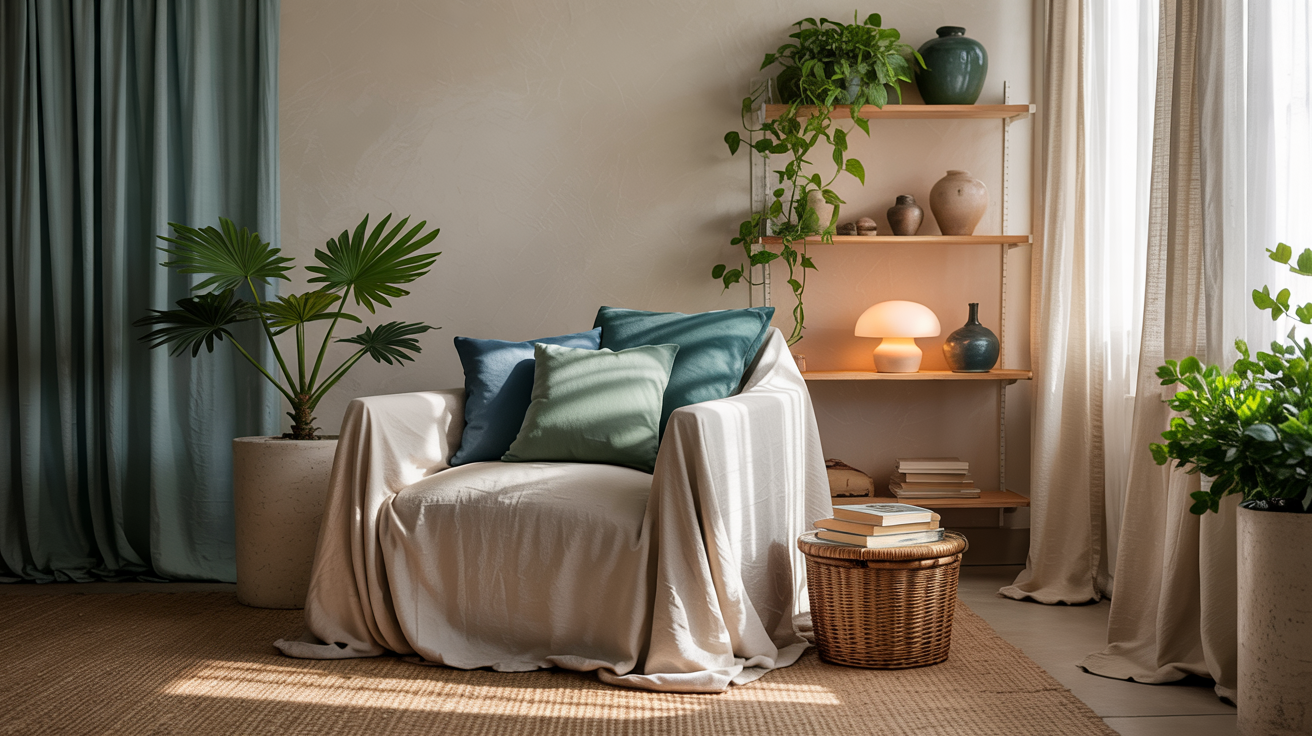
Build from nature’s own combinations – forest greens with mushroom browns, ocean blues with sand tones, or sunset oranges with sky blues. These color schemes feel right because we see them in the natural world.
Layered Lighting Design
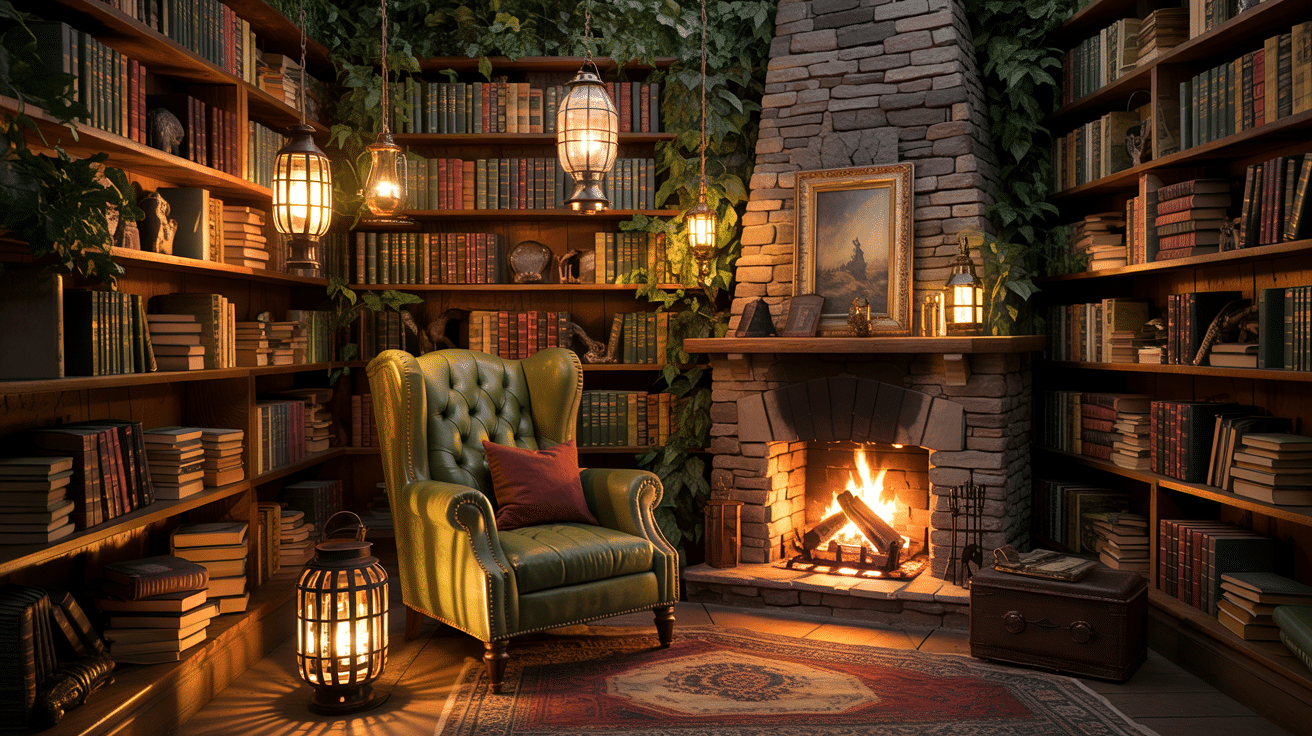
Create light sources at different heights, just like a forest has dappled light coming through at various levels. This creates a more natural feeling than having all light come from overhead fixtures.
Conclusion: Embracing Nature in Art
Nature-inspired design isn’t just a short-lived style – it’s a return to what makes us feel truly at home. By adding items that link us to the natural world, we create spaces that help us think more clearly, feel more relaxed, and enjoy better health.
Whether you start with a single plant, a wooden table, or a wall of nature photos, each natural touch brings the outside world into your daily routine.
The best part? You don’t need to be a design pro or spend a lot of money to begin.
Want to try biophilic design in your own home?
Start with just one spot where you spend most of your time. Add something natural that makes you smile, and then watch how it changes your feelings. Share your before-and-after photos with us; we’d love to see what you create!

